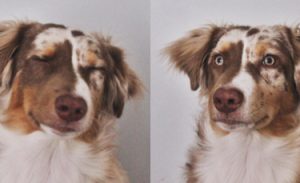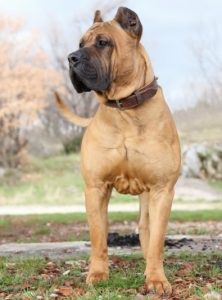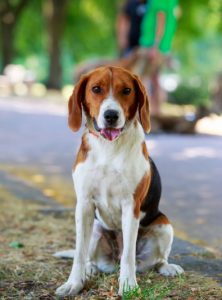Other names: Nihon Suppitsu, Japanese Spitz
The Japanese Spitz is a robust dog, small in size, easily recognizable by its abundant white coat and triangular, pointed ears, characteristic of the Spitz type. Harmoniously and solidly built, the Japanese Spitz is distinguished by its appearance combining nobility, elegance and liveliness.
<!–
–>
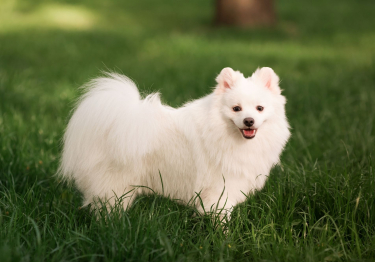
| Long | |
| Japan | |
| Small | |
| Oval |
| Sex | Weight | Cut |
|---|---|---|
| Female | From 6 kg to 10 kg | From 28 cm to 36 cm |
| Male | From 6 kg to 10 kg | From 30 cm to 38 cm |
History of the breed
Most historical sources agree that the Japanese Spitz is a descendant of the great white German Spitz. The resemblance between the 2 races is, indeed, quite obvious. The German ancestor of the Japanese Spitz was brought to Japan in 1920, notably passing through Siberia and northeastern China.
After being exhibited for the first time in Tokyo in 1921, the breed gradually benefited from contributions from North American, Australian and Chinese Spitz until the interwar period. The Japanese Kennel Club established the unified standard in 1948, then the breed was definitively recognized by the FCI on April 22, 1964.
Japanese Spitz Pictures
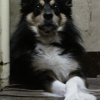
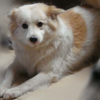
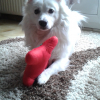
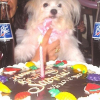
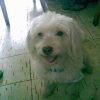
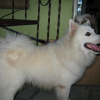
View all Japanese Spitz photos from Woopets members
Physical features
His coat: long, abundant, straight and wide apart, with a short, dense and soft undercoat.
Its color: pure white.
His head: moderately large and rounded, proportionate to the body, with the forehead moderately developed and the posterior part of the skull larger. The stop is marked.
His ears: triangular, pointed, small in size, set high, well erected and facing forward.
His eyes: dark, almond shaped, slightly sloping and moderately large.
His body: well proportioned, with a high withers, a straight and short back, a wide lumbar region and a well let down chest.
Its tail: of moderate length, set high, abundantly covered with hair and carried on the back.
Behavior and character
| Affectionate | |
|---|---|
| Calm | |
| Protective | |
| Independent | |
| Hunter | |
| Barks / howls |
Behavior with others
| Cohabitation with children | |
|---|---|
| Sociable with other animals | |
| Love strangers |
The Japanese Spitz is a lively, alert, jovial and intelligent dog. He knows how to show affection towards his master and his family, while being rather reserved towards strangers. It is also only when he considers that a stranger has approached a little too close to the house that he begins to bark. In this, the Japanese Spitz is considered an excellent companion dog. It remains quite discreet and silent. The opposite would be inconsistent with the FCI breed standard. He also gets along quite well with children. Obedience is not his strong point, however.
Education…
The Japanese Spitz must be educated in a firm manner, as he may have a tendency to want to assert his character and be not very docile. His intelligence and his taste for the game are all entry points to exploit during his education.
The Japanese Spitz
is it right for you? Take the test!
Education
| Clever | |
|---|---|
| Obedient |
Living conditions
| Suitable for apartment living | |
|---|---|
| Good for new masters | |
| Love it hot | |
| Love the cold |
The Japanese Spitz is able to withstand the cold, but it particularly likes life indoors, with the family. He appreciates human contact just as much as outdoor activities. It can thus adapt to all living conditions, whether urban or rural. A fenced outdoor space in which he can move freely and play his role as a warning dog is never too much for this type of dog. He is quite independent.
Health
| Solid | |
|---|---|
| Ease of gaining weight |
The Japanese Spitz is a generally healthy dog. He doesn’t really fear the cold, but prefers to live indoors. Regular monitoring and adequate nutrition ensure good health.
Hypoallergenic breed
No
Litter size
NC
To protect you from these risks and insure your companion in the event of health problems, Woopets recommends Japanese Spitz dog insurance .

function showAssuranceForm () {var siteReferer = var id_race_association = ‘263’; //console.log(id_race_association);success: function (html) {}});}document.addEventListener (‘DOMContentLoaded’, () => {$ (‘# assuranceModalBanner’). on (‘show.bs.modal’, function (event) {showAssuranceForm ();});});
Life expectancy
The life expectancy of a Japanese Spitz is, on average, less than 0 years.
Calculate the human age of your Japanese Spitz!
To choose… 1 year 2 years 3 years Four years 5 years 6 years 7 years 8 years 9 years 10 years 11 years old 12 years 13 years 14 years old 15 years old 16 years old 17 years 18 years old 19 years old 20 years 21 years old
Maintenance and hygiene
| Ease of maintenance | |
|---|---|
| Cost of maintenance | |
| Hair loss |
| Drool level | |
|---|---|
| Ease of grooming |
The Japanese Spitz remains subject to an annual moult. Despite its abundant coat, moulting does not cause hair loss that is difficult to clean, since it usually takes the form of balls. It is a relatively easy to maintain dog.
Exits…
An active and playful dog, the Japanese Spitz needs daily outings and exercises to stay happy, balanced and fulfilled. These outings are all opportunities to strengthen ties with your owner.
Hygiene…
It is recommended to brush the dog every day to keep the coat and skin clean. His eyes and ears should be inspected and cleaned on a regular basis to prevent possible deposits of impurities.
Price and budget
Purchase price
Mini
700 € Maxi
1200 €
The purchase price of a Japanese Spitz is between 700 € and 1200 €.
Annual maintenance cost
Mini
NC Maxi
NC
The annual maintenance cost of a Japanese Spitz is between NC and NC.
No name is currently proposed. Use our tool to find the name of your Japanese Spitz!
Want the best for your dog?
Create tailor-made food for your Japanese Spitz
I discover !
PROMO -30% | Delivered to you!

Physical activity
| Athletic | |
|---|---|
| Energy level | |
| Potential to play |
Competitions
| Classifications & Standards |
|
Others
| Master character <span class="btnTooltip qTip2" title="- Calm: the master must be gentle and know how to show patience. – Active: the owner must be energetic and dynamic to live in harmony with his dog. – Hyperactive: the owner must be stimulating and very restless to suit the temperament of his dog.”> |
Calm |
|---|
We talk on the forum
A Japanese spitz is good for children from 10 to 12 years old
Guest message
Japanese spitz x shiba inu
Message from Ange Lottier
Japanese Spitz: Cage and playpen size
Message from Nicolas Gay
My German Spitz bitch is expecting little ones!
Message from Bella08
Questions about the reproduction of the Spitz?
Message from Lisa Rea
Do you have a question about the Japanese Spitz?
Do not hesitate to ask Woopets visitors for advice on the forum!


